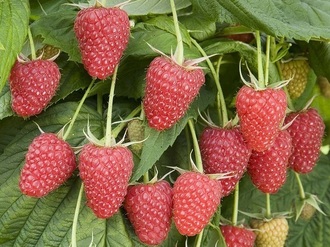Content
In Europe, Irish whiskey is considered one of the oldest spirits. Today it is the most popular type of whiskey in the world after Scotch, Canadian and bourbon. In 2003, Irish whiskey achieved sales of 38 million bottles worldwide, and in 2004, Jameson was recognized as the fastest growing whiskey brand. We already have an article on Scotch whiskey on our site, and today it's time to talk about Irish whiskey.
The exact origins of Irish whiskey are shrouded in the mystery of the times. But it is believed that Irish monks learned the technology of distillation in the 5th century, when they traveled to continental Europe, under the leadership of St. Patrick. When they returned home, they brought with them a recipe for whiskey and began to use it to make a cure for diseases such as smallpox and colic. No wonder the Irish have a saying: "If whiskey cannot cure something, then most likely it is incurable." You will probably be surprised, but to this day, the Irish believe in the healthfulness of this drink, and they will definitely pour you a glass of hot whiskey, noticing the slightest signs of a cold in you.
 A painting by Rudolph Bohenek, depicting a man and a barrel of whiskey, entitled "Wilde Irish Whiskey"
A painting by Rudolph Bohenek, depicting a man and a barrel of whiskey, entitled "Wilde Irish Whiskey"
The recipe for the manufacture remained secret until 1541, when King Henry 18 ordered all the monasteries to be dissolved and the monks driven out. The monks were expelled or killed, and the story of the "Irishman" received a new continuation. Soon, when the recipe ceased to be a secret, a new - commercial era of whiskey distillation began, which eventually made it available to the general population. In 1608, the Old Bushmills distillery and its owner, Walter Taylor, received the first license to produce the drink. By 1835, the quality of production had increased significantly, and with it, so did demand. This time can rightfully be called a period of prosperity for Irish whiskey.
 Irish monks on the shore
Irish monks on the shore
Well, after that a difficult time began. Alcoholism became a problem and the majority of the Irish population gave up alcohol. Of course, the producers of the drink suffered enormous damage. Then, in the 1920s, an economic crisis thundered in the United States, after which Prohibition was introduced, and this completely blocked access to the American market for Irish whiskey. And this, not to mention the serious competition that the British were, filling the alcohol market with their Scottish scotch. All this negatively affected sales and the Irish were forced to reduce the production of their drink. It took them a while to sort out all the financial problems, and today Irish producers are gradually but surely recovering their positions.
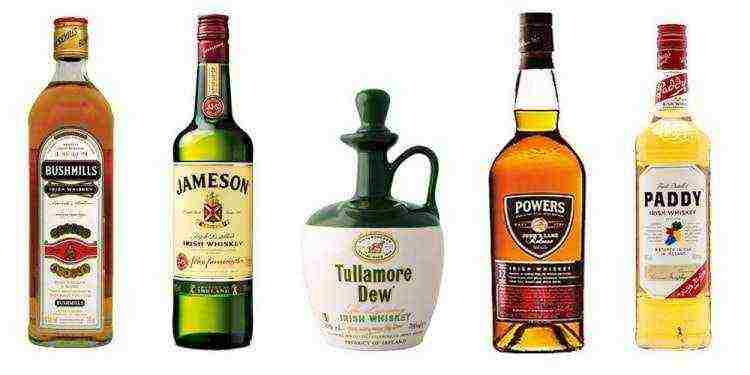 Irish whiskey varieties
Irish whiskey varieties
There are only four types of whiskey produced in Ireland: single malt, single grain, blended and pure whiskey. All of them have an average exposure of 8 to 15 years.
- Single Malt Whiskey - The production process takes place using a distillation still. It uses 100% barley malt.
- Single-grain whiskey - here everything is already proceeding differently, because a column distillation apparatus is involved. And it is no longer barley that is being used, but grain.
- "Pure whiskey" or "pure alembic whiskey" is considered a special grade. Manufacturing takes place exclusively in Ireland itself. What is it about him? Well, for example, other ingredients, such as green unsprouted barley, impart an unusual flavor. As for the rest, the same barley malt is still used here.
- Blended whiskey - everything is very simple here, we make a mixture of the above three varieties and get a blend.
By the way, we have a rating of 300+ whiskeys from around the world with a description of smell, taste and aftertaste.Try to find a description of the flavor of Irish whiskey there!
 Jameson Factory
Jameson Factory
Today in Ireland the largest distilleries are:
- Old Bushmills Distillery - located in the village of Bushmills in County Antrim, Northern Ireland. This distillery has a long and rich history dating back to 1608, when Sir Thomas Phillips obtained a royal license to make whiskey from James I. The plant survived fire, smuggling and heavy losses in the American market, but despite this it continues to thrive to this day. Today Bushmills produces 4.5 million liters of whiskey a year and stores 170,000 full barrels. Belongs to the international company Diageo. Issued by: Old Bushmills, Black Bush, 1608, Bushmills. By the way, in 2010, at the International Spirits Challenge held in San Francisco, Bushmills was awarded the title of "Best Irish Whiskey in the World."
- New Midleton Distillery - located in County Cork and is the main distillery of the group of Irish producers with a production capacity of 19 million liters per year. Founded in 1966, owned by Pernod Ricard since 1988. Open all year round for visits and excursions. It produces such world-famous whiskeys as: Jameson, Tullamore Dew, Powers, Paddy, Midleton, Redbreast and Green Spot.
Tullamore Dew whiskey
- Cooley Distillery - Created in the late 20th century and takes its name from Mount Cooley, located about 80 miles north of Dublin. Cooley has been relentlessly reviving traditional distillation methods, which does not go unnoticed - the plant has received more than 300 medals and the title of "World Producer of the Year 2008". Since 2011, owned by the Beam company. Produced by: Connemara, Knappogue, Michael Collins, Tyrconnell, St. Patrick, Finnegan.
The rest of the factories have either turned into museums and local attractions, such as the famous Jameson Distillery in Dublin and Tullamore Dew in Tullamore, or were built relatively recently and are about to start producing their own product.
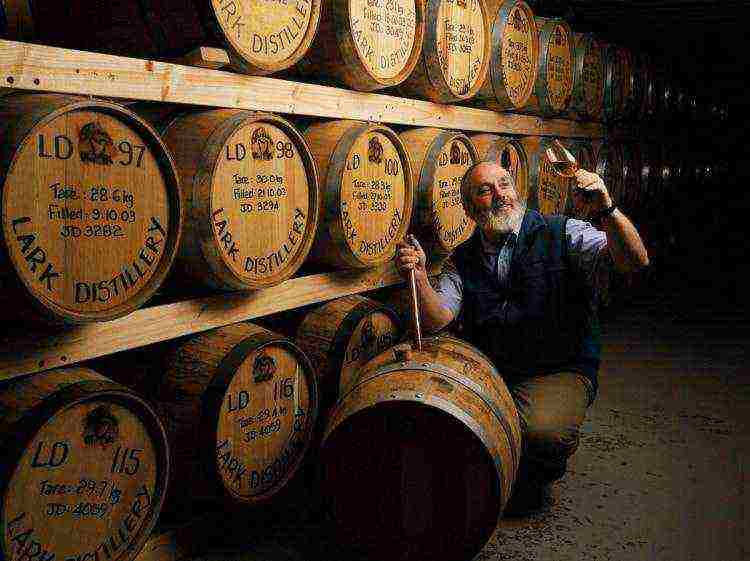 Barrels of whiskey in a warehouse
Barrels of whiskey in a warehouse
Whiskey preparation is a complex and painstaking process. Generally speaking, a production recipe includes three stages: fermentation, distillation and aging. It all starts with the fermentation of the grains, after the distillation of the contents begins, and only then the whiskey is settled in oak barrels. Unlike scotch, Irish whiskey does not use peat. Instead, kilns dry malt, which gives it a unique flavor. Also, the production technology requires mandatory triple distillation and at least 3 years of aging.
What are the ingredients used in the production of Irish whiskey? It's actually quite simple here: barley and barley malt with the addition of wheat, rye and oats. But there is one essential ingredient, without which Irish whiskey would lose its unique taste - pure natural water.
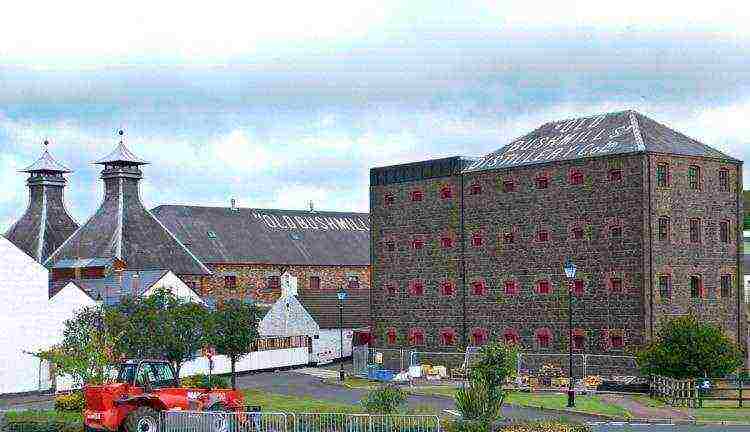 Old Bushmills Distillery Factory
Old Bushmills Distillery Factory
So, it's time to tell you about the stages of Irish whiskey production.
First, the grain is soaked, usually this process lasts two days. Then, the grain is laid out in a thin layer and seed germination begins. Some of the grain starch is converted to sugar. Now, the sprouted grain can be placed in the oven, thereby eliminating the absorption of foreign aromas and odors. This results in a kind of mild malt aftertaste. It's time to grind and after we grind the malt with barley, we must put all the contents in special vats and pour hot water. This is done in order to dissolve the starch and sugar in the water. The liquid is separated from the grain sediment and everything is pumped into another vat. Then, the main element of fermentation is added - yeast. The wort is aged, which lasts two days. Sugar after this time turns into carbon dioxide and alcohol. When the wort was ripe, it was time for distillation, and not simple, but triple.
 Whiskey production, distillation
Whiskey production, distillation
First, we get alcohol 25-30%, and after the second stage of distillation 65-70%. The third stage of distillation will not give us degrees, but will produce a final purification. Now, finally having received whiskey, we can pour it into oak barrels. The barrels, by the way, are assembled by hand. In the room where they are stored, absolute darkness and silence is observed so that nothing interferes with the aging process. During this time, the main notes of taste are formed and the whiskey acquires its trademark golden color.Well, and probably the most pleasant thing - after a while, the experts unseal the barrel and conduct a tasting. If all is well, further mixing occurs. More than thirty different varieties can be mixed in one barrel. After that, everything is filtered again, pure Irish water is added to create the desired strength, and finally, the drink is bottled.
When buying, you should also pay attention to etiquette. If it bears the inscription pure malt, then you should know that only barley malt of various varieties of barley was used in the manufacture of the drink. If you see single malt, then this indicates that only one variety of barley malt was used and everything was prepared in one enterprise. Finally, if it says blended, it means you are holding blended whiskey.
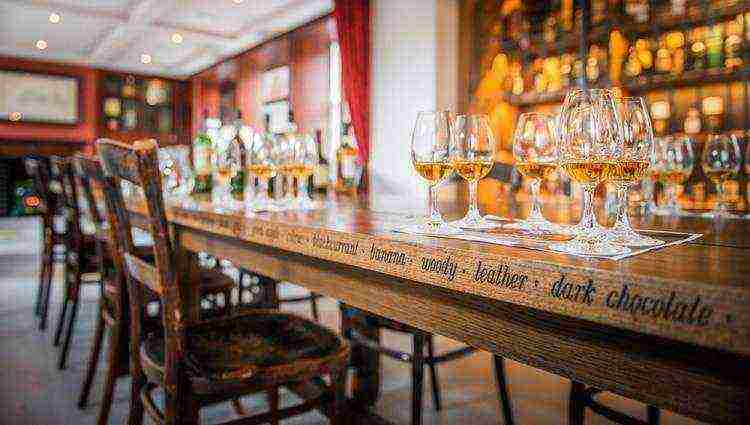 Whiskey glasses filled with drink
Whiskey glasses filled with drink
St. Patrick's Day is long gone, but I don't think you need an excuse to drink such a noble drink as whiskey. Perhaps you only need a free evening and the knowledge of which whiskey to choose. To say that some whiskey is worse and some is better would be fundamentally wrong. But what we can be 100% sure of is the variety of this drink. In principle, I will not talk about Jameson in this collection, since we can say that it has already become synonymous with Irish whiskey. Instead, I found something more interesting for you. So let's take a look at our wine cabinet ...
- Bushmills Blended Irish Whiskey is a good Irish whiskey with a light golden color. It contains flavors of pear, apple and vanilla. It is very soft and great for beginners;
- Connemara Peated Single Malt - has a pleasant hint of peat and a sweet aroma;
- Kilbeggan Blended Irish Whiskey - slightly sweet, moderately scalding, affordable - can also be a starting point for those who decide to explore whiskey;
- Knappogue Castle 12 Year Old Single Malt Irish Whiskey - Has a sweet start with hints of honey, toasted malt, milk chocolate and maple. A very sophisticated and noble "Irishman";
- Michael Collins Single Malt 10 Year Whiskey is a soft and muted start. Sweetish, with a touch of smoke, wood and raisins, just like Kilbeggan Blended Irish Whiskey, perfect for beginners;
- Powers Gold Label Irish Whiskey is a strong sweet start, with light tones of wood, vanilla, spice and brown sugar.
- Red Breast 21 Year Old Irish Whiskey - from the very beginning you will be surprised by the sour and, at the same time, slightly spicy shade of green pear, oak and pepper. The basis is: apple, pear, honey, malt, caramel, oak and allspice. After drinking, there is a long aftertaste.
- Teeling Small Batch Irish Whiskey - honey, caramel, malt and oak will welcome you. And only then, it will absorb dark chocolate, vanilla, cloves and cinnamon. All flavors are fantastically combined and complement each other. Careful, this guy with character!
- Tullamore Dew Blended Irish Whiskey - a green apple combined with caramel and grain - a very strong and aromatic opening. Yes, yes, this is one of those whiskeys that will not leave you indifferent. This is followed by another apple, but with a greater bias towards caramel and salty shade. Well, after a while, with increasing intensity, you will discover all the fullness of oak, black pepper and spices. Also, you will be pleasantly surprised by the slight hint of chocolate. This is a very kind and warm whiskey. Invite him into your glass and he will make your evening emotional.
- The Yellow Spot Single Pot Still Irish Whiskey is a proud guy with a dark golden color. The shade of oak is poorly expressed, but it is difficult not to notice it. Initially, you will be greeted sweetly with honey, milk chocolate, cream, peach and a little malt. The further you get to know Yellow Spot Single Pot Still, the more you will feel the dry notes of oak, black and allspice. Leaves a pleasant fresh aftertaste.
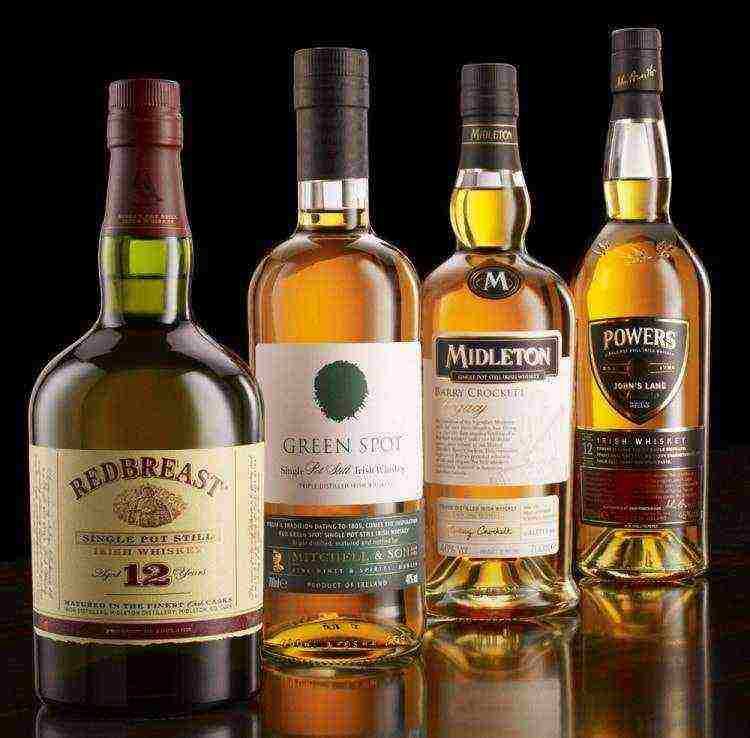 Irish whiskey
Irish whiskey
Irish whiskey, like any other drink, has its own characteristics, history and fans. And, as I said earlier, it's silly to argue about which whiskey is bad and which is good. Perhaps there is only suitable and unsuitable whiskey. Therefore, take the choice of your bottle of whiskey as seriously as if you were choosing your wife. No kidding. Remember, it depends only on you whether you will have a headache in the morning and whether there is a pleasant aftertaste after the night! Good luck!
Table of contents:
- Best Scotch Whiskey (Scotch)
- Best Irish Whiskey
- Japanese whiskey
- Canadian whiskey
- Best American Whiskey
Whiskey is an alcoholic drink, literally translated as "life-giving water." All over the world it is considered that this drink is for self-confident, calm people. The percentage of alcohol in whiskey is from 32 to 60%, therefore, as a rule, men drink it, but some women also love it. For example, the iron lady of Great Britain, Margaret Thatcher, is known to have a lot of respect for good whiskey.
Whiskey is produced by distilling fermented wort from various types of grain. Basically, barley and wheat are used for its production, less often rye, but whiskey made from corn is called bourbon.
After the grain is ripe, the whiskey is blended, that is, mixed with alcohol and water, and in some cases with wine or aromas. After the resulting drink is aged in oak barrels. The color of this strong drink can be either soft honey and golden, or luxurious chestnut. You can make Baileys from whiskey at home, and this drink will win you over too.
Ireland and Scotland can be noted among the largest producers of the drink, each of these countries is fighting for the title of the best. This drink is also made in America, Japan, Sweden, India, Canada. Whiskey lovers also often debate which whiskey is better - Irish or Scotch.
Best Scotch Whiskey (Scotch)
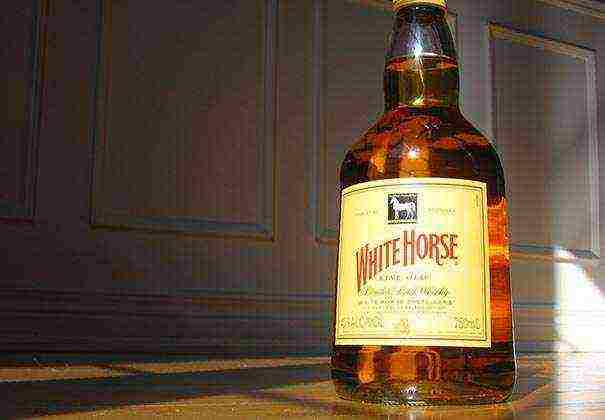
The Scots believe that it was they who invented whiskey, a distinctive feature of which is the smoked flavor resulting from the drying of raw materials on peat coals. Many people love Scotch whiskey precisely because of this peculiar taste, while some, on the contrary, do not like it.
Scotland's best brewers - Johnnie Walker, Chivas Regal, White Horse, Glenfiddish, Cardhu.
Of course, the popularity and sales of all well-known world brands are influenced by the taste of the drink, as well as the individual preferences of buyers who really know how to drink whiskey correctly. But, nevertheless, the best brand in the world is always determined by a competition and a jury.
Johnnie walker
The finest Scotch whiskey. This brand ranks first in terms of its popularity in the world market.
The peculiarity of this brand lies in the availability of the drink both for those who cannot afford to buy expensive scotch tape and for connoisseurs-collectors who are able to buy an exclusive bottle.
This brand of whiskey began its existence in the second half of the 19th century. At the very beginning, the trademark was called Old Highland, but later, in 1901, the well-known Johnnie Walker was renamed.
Chivas regal
Ranked second in world market leadership. The date of his birth falls on 1801. This scotch has a mild flavor that is unusual for Scotch whiskey. Chivas Regal will also appeal to fans of the highly smoked flavor of the drink.
White horse
The drink is made from a mixture of several varieties of malt and grain whiskeys in a ratio of 70:30%. It is this feature that made the brand so popular.
Best Scotch Whiskey Videos
Glenfiddish
An interesting feature of this stamp is its issue date: January 7, 1887, exactly on the holiday of Christmas. The owners of the distillery are the Grant family, who continue the work of their great-grandfathers today.
Cardhu
Drinks of this brand have such a delicate and soft taste that they are often called ladies'. This can be explained by the fact that the founder of the distillery is a woman, Elizabeth Cumming. Cardhu is the most famous single malt scotch in the world.
In addition, there are such best Scotch whiskeys as AnCnoc, which has a rough, spicy and salty taste, and Dewars, which is notable for a rather low price and a pleasant taste.
Best Irish Whiskey
The Irish claim that whiskey was born in their country. The malt used to make whiskey is kilned here instead of peat. Also, the Irish use triple distillation for production, which makes the drink softer and more pleasant to the taste.In this country, the beloved brand of whiskey Jameson is produced - the first distillery in Ireland to make whiskey.
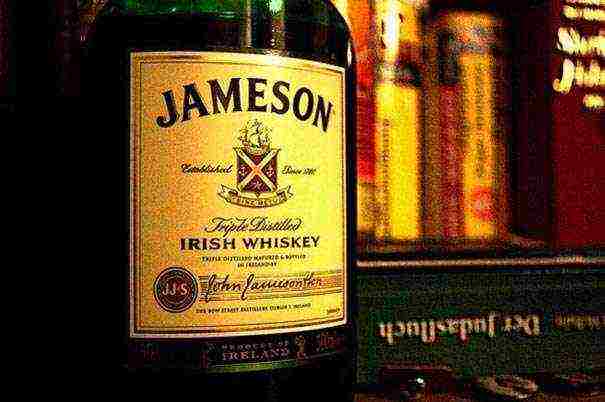
Although the most popular brands in the world are Scotch tapes, the Irish also produce a high quality alcoholic product. To obtain blended whiskey, Irish producers, like Scotch, mix pure or single malt product with grain.
Irish law requires whiskey to mature for at least three years.
The range of Irish whiskeys is somewhat inferior to Scotch whiskeys, but some of them are even more popular than Scotch scotch.
What is the best Irish whiskey? Among the famous brands, the most popular are: Tullamore Dew, Bushmills, Jameson.
Tullamore dew
Due to its exceptionally mild taste and the presence of subtle notes of lemon, hardened wood and walnut, this brand is rightfully considered the hallmark of Ireland. Tullamore Dew has won the title of Best Irish Whiskey with a Unique Taste on several occasions.
The drink got its name thanks to the city in which it was produced - Tullamore, and "Dew" in translation from Irish means "fresh", "clean", "dew". The bottle label is adorned with a logo depicting the Irish wolfhounds, the national state symbol.
Jameson
Jameson is considered to be the most popular Irish whiskey. This alcoholic drink began to be produced more than 200 years ago. Its characteristic features are softness and a special, golden color, which is formed as a result of aging the drink in special barrels made of oak.
Video on which Irish whiskey is better
Bushmills
If Tullamore Dew is the finest Irish whiskey, then Bushmills is a true long-liver, as it is one of the oldest whiskeys in the country. He was first born in 1608. Its characteristic feature is the subtlest aroma with honey notes. The company producing this product attaches great importance to the oak barrels in which the drink is aged. Therefore, this type of whiskey is stored only in the best that exists on the market. Previously, such barrels were used for aging sherry, Madeira or bourbon.
Japanese whiskey
In the Land of the Rising Sun, rice, corn and millet are used for the production of whiskey. The technology is close to the Scottish one, but the Japanese do not dry the raw materials on peat.
The most popular brands are Yamazaki, Hibiki, Nikka, Suntory, Hakushu Single Malt Whiskey.

Canadian whiskey
Canadian drinks are stronger than their European counterparts. Rye is used as the main raw material for production. Whiskey in Canada is produced by only nine enterprises, and most of the drink is consumed by Canadians themselves. As a rule, they drink it with cola or other carbonated drinks.
Some of the most popular brands are Canadian Club Classic, Seagram’s V.O, Seagram’s Crown Royal.
Best American Whiskey
In America, I often call this drink bourbon, at least 51% of corn is used for its production, and the share of the rest of the raw materials is rye and barley.
Whiskey appeared in America thanks to the Irish and Scottish settlers, who, having lived for some time in the new land, soon realized that it was very expensive to bring this drink from their homeland. At the first attempts to organize production, it turned out that in America there is no such quantity and quality of barley as at home. Then we decided to try using corn, and as a result we got a cheap and relatively good product.
Bourbon differs from Scotch whiskey by the aging method, for which not old, but new oak barrels are used, the inner surfaces of which are fired by Americans today using a special technology. This gives the American whiskey additional flavor characteristics.
The problem of where to dispose of used barrels, American manufacturers decided simply - they began to sell them to the Scots, who use only old barrels.
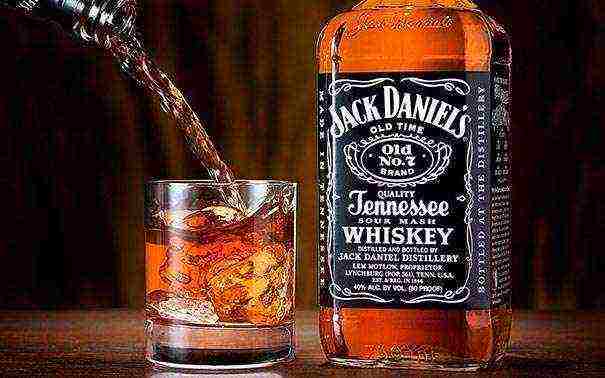
In America, there are 10 main types of this drink, but they all differ from the Scottish in a softer taste.
According to the results of the competition, which is annually held by the World Whiskies Awards magazine, the best American whiskey was named - Parker's Heritage Collection.
Among the most common are:
- Jack daniels
- Jim beam
- Wild turkey
- Old virginia
Bourbon is considered the official drink of America and is very popular among the locals. Other peoples in whose territory whiskey is produced also consider it one of their favorite drinks. There are a huge number of different brands in the world, and each of them has its own fans. Still, most connoisseurs of this noble drink claim that the best whiskeys are produced in Scotland and Ireland.
What kind of whiskey do you like and why? Share your opinion in the comments.
Despite the fact that the Scotch whiskey is much more popular than the Irish, the brands of the latter still have an equally glorious history of origin and formation. Moreover, some Irish varieties deservedly trump high awards of the international level, and have their admirers in all corners of the world.
Irish whiskey origins
It is not possible to say exactly who and when invented Irish Scotch. The only certainty is that the distillation technology was discovered by Irish monks who traveled around Europe in the fifth century. Some even attribute this undoubtedly useful work to Saint Patrick himself. Upon returning home, the monks began trying to make the drink for medicinal purposes, sometimes even successfully treating such terrible diseases as colic and smallpox. The most interesting thing is that the people of Ireland use whiskey as an anti-cold remedy to this day, firmly believing in its medicinal qualities.
Until 1541, the monks carefully concealed the whiskey recipe, until King Henry the 18th dispersed numerous holy cloisters and the era of "commercial" scotch tape came. The demand for the latter grew by leaps and bounds, along with it the number of small and large private distilleries increased.
Whiskey types of Ireland
Since Irish producers are now confidently on their feet, pampering the world community with all the new varieties of their products, every year a different drink receives the status of "the best Irish whiskey". Despite the difference in taste, aroma and color, the national alcohol is divided into only four varieties, namely:
- Single malt made from 100% barley malt and stills.
- Single grain, which requires the presence of wheat or rye grains rather than barley, and a column distillation unit.
- "Pure", the production of which implies the presence of non-standard ingredients like sprouted barley seed.
- Blended. Well, everything is simple here: the above varieties are mixed in different proportions.
Differences between Irish and Scotch whiskey
The main difference between Irish and Scotch whiskey is triple distillation, as well as special ingredients that distinguish typical Irish varieties:
Teeling small batch
Teeling small batch
Teeling small batch is a guy with character, and therefore you need to be careful with him! With the first sip, it may seem that the drink is truly feminine, filled with the taste of malt, caramel, honey and oak. But after a couple of seconds, you will be overwhelmed by the burning sensation of cloves, cinnamon, dark chocolate and vanilla.
Tullamore dew blended
Tullamore dew blended
Tullamore dew blended has an extremely aromatic beginning, which simultaneously contains caramel, grain and apple. The taste gradually changes and the apple-caramel-salt shade becomes more and more pronounced. Another moment, and it is replaced by black pepper, spices, oak and quite a bit of chocolate. This is one of the types of adhesive tape that cannot leave you indifferent, and which you will definitely want to purchase for your home collection.
Yellow spot single pot still
Yellow spot single pot still
Yellow spot single pot still is a dark golden drink with subtle oak notes on the palate. The first impression is that something delicate has got into the mouth, consisting of peach, malt, plum, milk chocolate and honey. But it quickly passes, and after a second, dry notes of oak, allspice and black pepper are indicated. Aftertaste? Oh, it's fresh and extremely pleasant.
Which is better Irish or Scotch whiskey?
How is Scotch whiskey different from Irish whiskey? - an alcoholic educational program was organized in Sevastopol
This question also belongs to the category of rhetorical, because the color and taste ... well, you know. Judging impartially, Scottish products are clearly winning, and here's why:
- A huge number of distilleries producing more than a hundred types of single whiskey, and a myriad of products of different blends, aging, age, etc. Ireland boasts only three full-fledged factories, of which only a couple make single whiskey.
- Scotch from Ireland does not indulge in a smoke in taste and aroma, but it is this very moment that "clings" to harsh men.
- The Scots do not neglect traditions and can afford not to save space in the cellars by placing the barrels horizontally. The Irish group the containers vertically, and they say that this affects the taste of the drink.
- Due to the triple distillation, the alcohol from Ireland is lighter, but not as aromatic as its Scottish counterpart.
Whiskey is a complex and multifaceted product, and only the end consumer can say exactly which is better and which is worse.
Irish whiskey is a strong alcoholic beverage produced in Ireland. In Europe, this type of alcohol is one of the oldest. Written sources tell of Irish whiskey as early as the middle of the 12th century. Manufacturers do not try to pretend to be noble and rarely use triple distillation. Peat is also practically not used when drying grains. The goal of the Irish is just to drink.
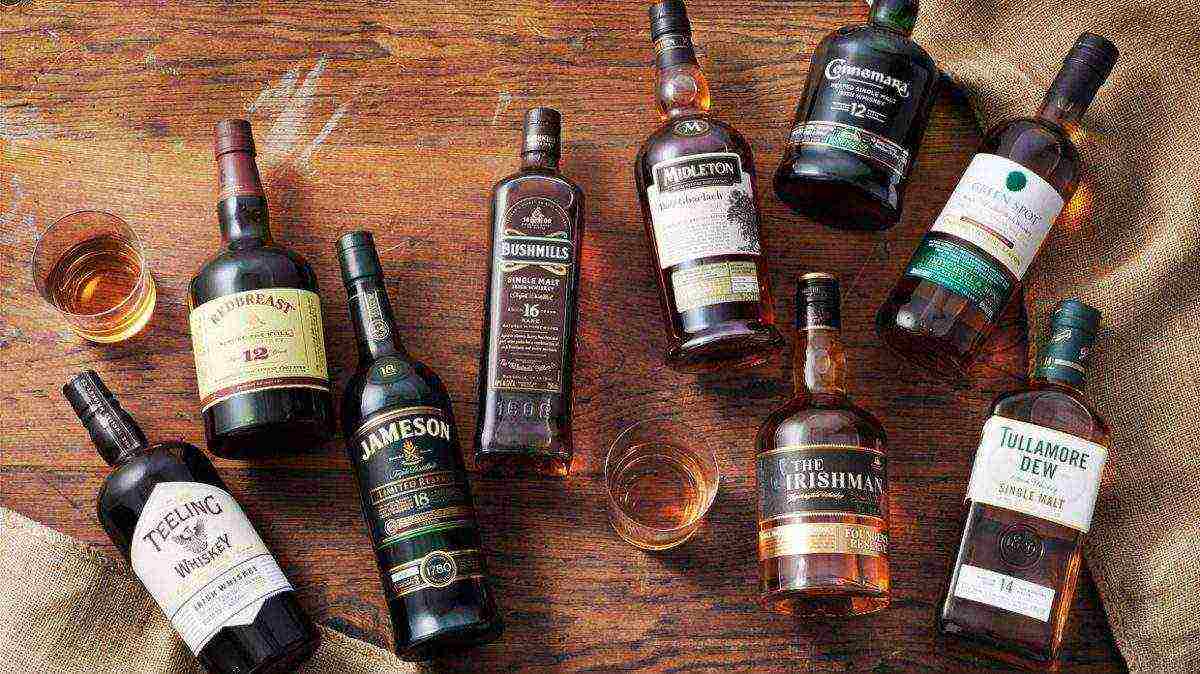
The difference between Irish and Scotch whiskey
The "peat" aroma is inherent in most varieties of Scotch whiskeys - this is due to the production technology. During drying, sprouted cereals are fumigated with peat smoke - but this is in Scotland. The Irish do not use triple distillation and completely ignore peat. Sometimes there are exceptions. So, in Connemara, whiskey is made with a smoky aftertaste, which has gone through a double distillation. Even connoisseurs sometimes confuse this drink with classic scotch tape.
Features of production
We will look at the intricacies of making Irish whiskey using the example of the tiny town of Tullamore, in which the Tullamore DEW plant is located. The company was founded by Joseph Flanagen in 1780. The distillery was built on the coast of the Grand Canal, through which barrels of alcohol were delivered to Dublin for a century and a half. At the same plant, Daniel Edmond Williams applied the revolutionary triple distillation technology for Ireland - this happened in 1893.
Water, barley, corn and barley malt are used to make malt. Water distilleries are extracted from underground artesian sources. Cereals are sorted out, peeled and dried. After scattering the grain in the malt houses, the owners cover it with a thin layer of water. Germination takes about ten days, after which the drying stage begins. For this, a conventional oven is used (charcoal, peat and beech shavings are absent). The further process looks like this:
- The malt is ground into flour and mixed with water (hot).
- The mixture is aged for 8-12 hours.
- Fermentation (fermentation) begins. Yeast is added to the wort.
- The low-alcohol drink is loaded into copper stills.
- Distillation begins (double or triple - it already depends on the technologists).
- The resulting alcohol is poured into oak barrels (ideally from sherry).
- Exposure takes place over three years.
- After checking the quality, blending begins - mixing various varieties of whiskey (a blend can contain up to 50 varieties of a drink).
- The whiskey is filtered and bottled.
Please note: Authentic Irish Whiskey is only produced on the island of Ireland. The minimum exposure must be 3 years. The maximum alcohol content in distillates is 94.8%.
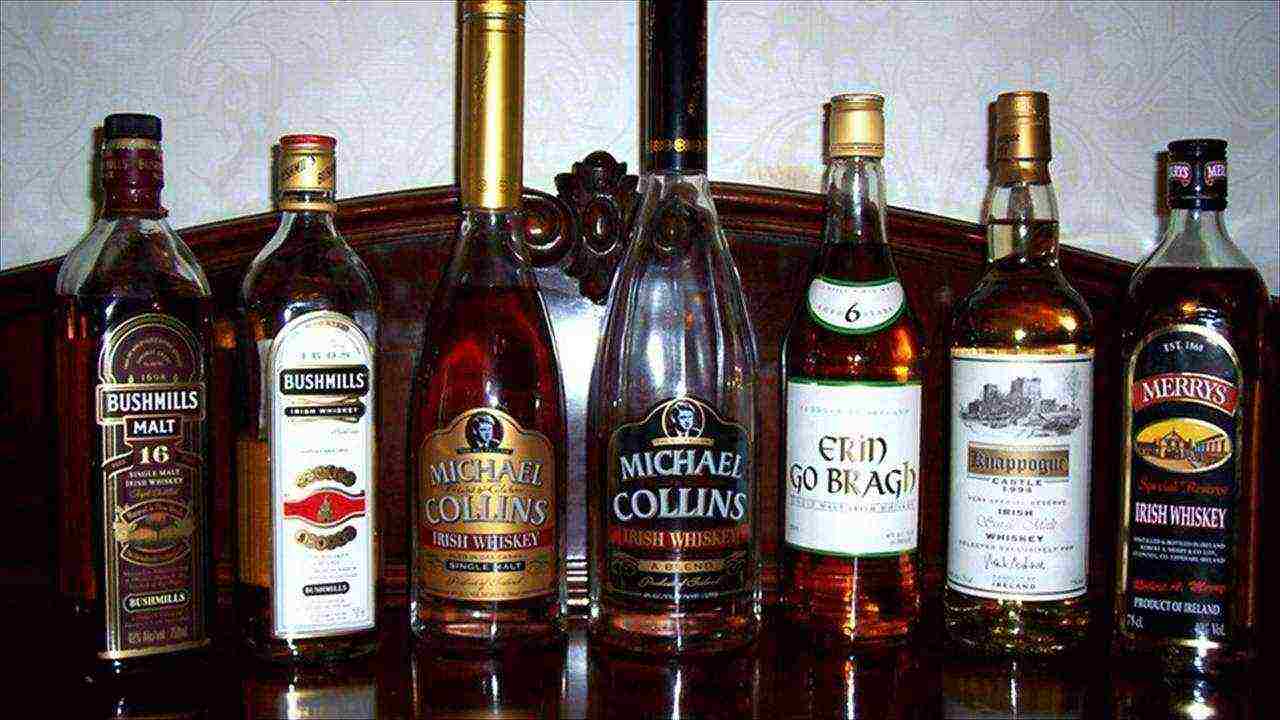
Classification
Varieties and varieties of Irish whiskey differ in both production technology and recipe. Oats, wheat, rye and even corn are used as cereals. As for distillation, in addition to distillation stills, Coffey columns (continuous cycle units) can be used. We list the existing varieties of Irish whiskey:
- Single malt. Barley (non-germinated) malt is driven through copper cubes. This is an expensive and high-quality variety, close to Scottish scotch in its characteristics.
- Single-grain. Column Coffey and unmalted grain are used. The result is pure alcohol with neutral taste characteristics, almost odorless. It is used in various blends, practically not drunk in its pure form.
- Pure whiskey. This drink is the “calling card” of Ireland. The recipe includes two varieties of barley (malted and unmalted grain). Braga is pumped through standard cubes.
- Blended. The second name for this variety is Blended Whiskey. The recipe provides for mixing (blending) a variety of matured varieties. This group of whiskey is considered the most popular. The highest quality brands include the elite Pure Pot Still and Single Malt.
Main manufacturers
The history of distilleries in Ireland is full of turbulent events. Private companies opened and closed. Sometimes there were mergers. There are not so many ancient factories with centuries-old traditions. Some enterprises were registered recently, some of the factories are still under construction. Here are the current Irish whiskey producers:
- Alltech Craft Distillery (company on the market since 2012);
- Dingle Distillery (another distillery launched in 2012);
- Cooley Distillery (produces well-known brands Knappogue, Connemara, St. Patrick, Michael Collins, Finnegan and Tyrconnell);
- The Echlinville Distillery (a Northern Irish enterprise with a 125-year history);
- New Midleton Distillery (since 1975 produces Powers, Jameson, Redbreas, Midleton, Green Spot and Paddy brands);
- Kilbeggan Distillery (property of the Beam concern);
- West Cork Distillers (based in Cork since 2008);
- Old Bushmills Distillery (Ireland's oldest spirits producer, operating under a royal license since 1608);
- Tullamore Dew Distillery (young company, operating since 2014).

Famous brands
Irish whiskey is produced in a dozen distilleries scattered throughout the island. The most famous brands are:
- Cooley;
- Jamesons;
- Connemara;
- Tullamore Dew;
- Greenore;
- Erin's Isle;
- Locke's;
- Millars.
History of Irish Whiskey
The history of whiskey making in Ireland begins in the 5th century. There is a legend about Saint Patrick and missionary monks who brought distillation technology to the island. No historical documents have been found to support this myth. The first license for the production of the drink dates back to 1608 - it was received by Walter Taylor, the owner of the Old Bushmills distillery. Taylor received his license from the hands of Arthur Chichester, Lieutenant Lord of the British Crown. The holder of the patent was obliged to deduct certain amounts from the profits to the treasury. In addition, Taylor received the right to license the activities of other distilleries in the district.
In 1661, all spirits producers in Ireland were taxed. Most of the distilleries operated without registration, but everything changed in 1761. The legalization of enterprises became a pressing necessity, since it was not possible to hide from taxation in big cities. Since 1771, a tax on distillation units was added to the common troubles of industrialists. Many whiskey makers have begun to step out of the shadows by registering their companies. In 1823, there were about 20 factories that officially produced strong alcohol. In 1835, about a hundred companies were legalized.
The Irish whiskey industry grew rapidly. Alcoholism of local residents became a side effect.The monk Theobald Matthew began to actively fight this phenomenon, whose sermons for five years led to a massive refusal of the Irish to drink alcohol. Sales on the island fell, and industrial incomes fell.
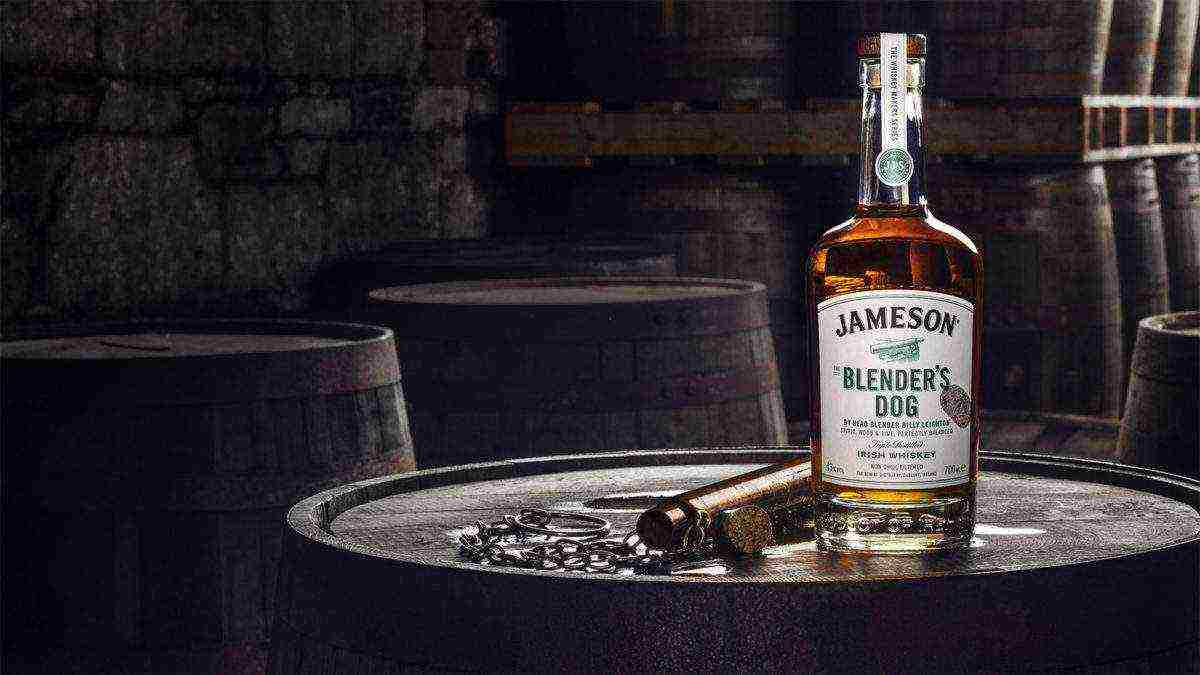
Modern stage
In 1830, Aenas Coffey patented a new generation distillation apparatus. The whiskey produced with the Coffey device had a distinct alcoholic flavor. When the first wave of popularity of Coffey's columns subsided, the Irish returned to traditional technology. The art of whiskey making reached its peak in the middle of the 19th century, but the war between the Irish and the British soon began. An unfavorable political climate has led to the fact that Irish whiskey has practically disappeared from the map of Europe. Problems continued until the middle of the 20th century (world wars, prohibition in the United States).
By the 1950s, only three whiskey distilleries survived. These are John Powers, John Jameson and the Cork Distillers Company. To save their business, the owners decided to unite. The historic merger took place in 1966 to form the IDL company. The next step in optimizing production was the construction of a huge distillation complex in Cork. This happened in 1975. Since 1988, the IDL concern has been owned by the French alcoholic monster Pernod Ricard. Another major Irish whiskey maker (Cooley) narrowly escaped a takeover. The pending deal with Pernod Ricard was canceled by the Irish Antimonopoly Committee.

